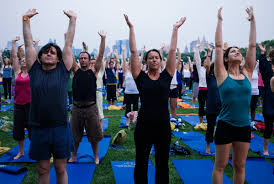Daily discomfort often appears as tight shoulders, an aching lower back, or stiff hips. Minor aches and pains can make simple tasks more challenging. Yoga and stretching routines offer gentle yet effective ways to relieve this discomfort and support your pain management strategies. Here’s how fitting yoga and stretching into your day supports better movement and eases everyday aches:
Increased Flexibility
Regular stretching lengthens muscles and improves the range of motion in your joints. With consistent practice, you may notice it becomes easier to bend, reach, or twist without strain. Flexibility supports daily movements and helps the body feel less restricted.
Chronic and Acute Pain Relief
Stretching and yoga can be powerful tools for alleviating chronic and acute pain. By gently elongating muscles and improving circulation, stretching helps reduce tension in areas prone to stiffness, such as the neck, shoulders, and lower back. With its mindful movements and focus on breath control, yoga fosters relaxation and releases muscle tightness, which can contribute to pain relief. For individuals dealing with conditions like arthritis or sciatica, certain yoga poses can be especially beneficial in managing discomfort. Incorporating these practices into your routine soothes existing pain and helps prevent it by promoting better posture and body alignment.
Improved Posture
Slouching at a computer or looking down at your phone may cause tension in your neck and back. Yoga emphasizes alignment of the spine and body awareness. Simple postures like mountain pose and gentle stretches train your body to hold itself upright. Better posture often leads to fewer headaches, less back pain, and a more balanced weight distribution.
Enhanced Energy and Cardiovascular Benefits
Physical tension and discomfort often drain your energy. Taking time to move through a short sequence of yoga poses or stretches helps release muscle tension and encourages steady breathing. This movement increases blood flow and delivers oxygen to your muscles. Many people notice they feel more alert and refreshed after practicing, which makes it easier to meet the demands of their day.
Some forms of yoga elevate your heart rate and support heart health. Flowing sequences, like vinyasa or power yoga, encourage continuous movement between poses. Over time, these practices support circulation and help maintain a healthy blood pressure.
Practical Tips for Easing Discomfort
If you want to use yoga and stretching to manage daily aches, a few minor changes go a long way:
- Set aside a few minutes each morning or evening for a short routine.
- Focus on areas where you feel tension, such as the neck, back, or hips.
- Pay attention to your breath and move gently within your comfortable range.
- Listen to your body, stopping if something feels painful or sharp.
Small moments of mindful movement could be the missing piece in your pain management strategy. Reach for your mat or practice simple stretches at your desk whenever discomfort arises.
Ask a Pain Management Specialist About Stretching
Taking care of your body through mindful movement is a simple yet effective way to reduce tension, enhance flexibility, and promote overall well-being. Incorporating these small practices into your daily routine can make a noticeable difference in how you feel, both physically and mentally. If you’re looking for personalized guidance or want to explore the benefits of stretching and yoga, consider scheduling a consultation with a pain specialist. They can help tailor a plan that meets your needs and supports your path.

